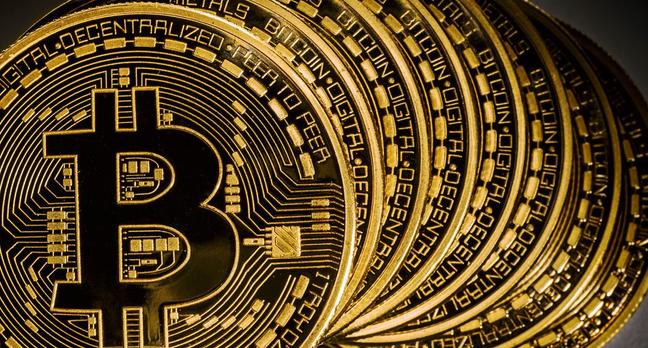Why Bitcoin will eventually change the world
The ‘cryptocurrency’ promised us a revolution. But, will infighting among its traders help rival value exchange systems steal its thunder?
If you take even a passing interest in technology or finance, you’ll already know about Bitcoin. The digital currency was released in 2009 and was heralded as a decentralised network for value exchange that would take power away from governments and big banks and put it in the hands of ordinary people.
Its revolutionary ‘blockchain’ technology created a distributed public ledge of transactions and enabled nearly instantaneous, cost-free transfers of money anywhere in the world. As it gathered momentum, Silicon Valley venture capitalist Marc Andreessen wrote in The New York Times that its invention was on a par with that of the personal computer, or the internet.
However, the technology’s utopian ideals weren’t what first brought it to wider public attention. Instead, it began to garner interest thanks to its sharp fluctuations in value, its status as a preferred method of payment for drugs and weapons on the dark web marketplace Silk Road, and because of the mystery surrounding the identity of its founder, known as Satoshi Nakamoto.
After several false starts, that mystery appeared to have been solved in May this year when the BBC ran a triumphant story about Craig Wright, an Australian cryptographer who claimed to be the man behind the famous pseudonym. While there was much in Wright’s account to suggest that he was involved in the development of the technology on some level, it soon emerged that the ‘proof’ he had supplied to establish his identity as Satoshi wasn’t what he claimed it was, and the debate resumed.

Many people now think that if Satoshi is or was just one person, then the most likely candidate may be Dave Kleiman, a computer forensics expert who was in contact with Wright before passing away in 2013 from complications relating to serious injuries from a historic motorcycle accident.
Some Bitcoin watchers, such as Stan Higgins, a reporter at the cryptocurrency news website CoinDesk, don’t think that the identity of Bitcoin’s founder will affect its future. ‘The Bitcoin world is moving in a direction without [Wright’s] involvement,’ says Higgins. ‘It will carry on without him or Satoshi. I think if you talked to most Bitcoin developers, they would tell you that it doesn’t have any impact.’
But not everyone agrees. Earlier this year Mike Hearn, a British computer programmer who left Google after eight years to work full-time on the cryptocurrency, published a blog post that sparked what has been described as a ‘civil war’ within the Bitcoin community. Hearn objected to the limit on the speed and quantity of transactions that could be made using the Bitcoin network – less than seven per second, in his estimate. Already backlogs had begun to cause delays of several days in the time it would take to process transactions and Hearn feared that, in the longer term, such problems would prevent Bitcoin from scaling beyond its existing, tightly knit techie userbase.
So Hearn and some likeminded developers proposed a solution – a segue to an updated version of Bitcoin, Bitcoin XT, that would increase the speed of transactions and pave the way for the digital currency to be used by more and more people. However, they quickly met resistance.

The problem, Hearn wrote, was that after Satoshi Nakamoto disappeared from the scene and ‘handed over the reins’ of Bitcoin to the developer Gavin Andresen, the latter also granted access to the code to four other developers.
One of them, Gregory Maxwell, objected to Hearn’s proposal on the grounds that speeding up transaction speeds by increasing the size of the ‘blocks’ would mean that only people (or more likely, big companies) with more advanced hardware would be able to run the nodes that process transactions. This was significant because it is by processing transactions that you ‘mine’ new Bitcoins and earn the right to have a say in discussions about the currency’s future.
As it turned out, the balance of opinion among the power players in the Bitcoin community (where voting rights are based on the amount of mining that you do) swung toward Maxwell’s point of view – though perhaps not for the reasons he had initially given. It has been suggested that congestion in the system actually benefits existing miners, who can charge fees in order to process selected payments more quickly by shunting them to the front the queue.
Whatever the reasons, Hearn’s solution failed to gain much traction and, having once been an enthusiastic proponent of the technology, he has since announced that ‘[Bitcoin] has failed.’ But that position isn’t universally held.

‘I’m not too worried about this issue,’ says Dr Garrick Hileman of the University of Cambridge Centre for Alternative Finance. ‘It would be suicidal for the Bitcoin community to not deal with this one way or another. A stopgap measure called Segregated Witness has already been put through, which will increase throughput temporarily.’
When I contact Mike Hearn to ask if the recent introduction of the stopgap measure has changed his opinion, he refuses to give an interview, choosing to respond with a brief email in which he explains that he doesn’t ‘feel like going over that stuff again’. He adds: ‘Suffice it to say that I still hold that same view as before and I think the events (or lack of them) in 2016 have proven me right.’
If Bitcoin’s growth does turn out to be stunted by its failure to sufficiently increase transaction volumes and speed, then there may be a chance for a rival blockchain technology, Ethereum, to overtake it. Ethereum isn’t digital money per se, although it does comprise its own digital currency called Ether.
Instead, it is a ‘decentralised platform’ that uses blockchain technology to provide an adaptable framework on which other applications can be built. This includes so-called ‘smart contracts’ that can be written or programmed and then left to autonomously execute themselves based on pre-determined criteria. Insurance policies, wills, sports betting and any number of other applications could be set up this way and left to execute the pre-agreed terms when the sufficient conditions are met.
In theory, entire companies could be run in the same way. In fact, that is what was supposed to happen with the formation of the Decentralized Autonomous Organisation (DAO) in May of this year. Essentially the DAO was to be a kind of unmanned venture capital fund, with no board of directors, that was built on Ethereum to automatically make investments according to rules agreed by its backers. It set the record for the largest crowdfunding campaign in history, attracting $120 million of investment, and was written with code that was made available to all.

It could have served as a template for future companies or NGOs, but that now seems unlikely. In June, the DAO suffered a security breach, with a third of its funds being diverted away by ‘hackers’. But since the so-called hackers were merely taking advantage of the architecture of the DAO’s code, rather than perpetrating a theft in the conventional sense, opinion was split on how or whether to take action.
In the end, Ethereum’s creator-in-chief – a gangly 22-year-old Russian Canadian called Vitalik Buterin – proposed a ‘hard fork’ of Ethereum, effectively allowing users to transfer to a new version of the platform in which it was as if the hackers’ re-appropriation of the DAO’s funds had not happened. While the technical and ethical merits of the decision have been much debated, Hileman thinks that the response from Buterin underlines one of Ethreum’s key strengths.
‘There’s a big contrast here between Ethereum on one hand and Bitcoin on the other, where the founder is this absentee landlord who still owned a big chunk of Bitcoin but wasn’t around to address governance issues. You saw serious gridlock around the scaling of Bitcoin, whereas Ethereum, with the founder still very engaged, can respond to pretty big issues like this hack very quickly. It seems to have been a success.’
In the plus column, however, Bitcoin has its size and reputation. At almost $10 billion, its market cap is just shy of being 10 times as big as Ethereum’s (its closest competitor) and, as a result, it continues to attract interest. For example: from Tyler and Cameron Winkelvoss, the twins who reportedly received $65 million in a settlement from a lawsuit in which they alleged that Mark Zuckerberg had created Facebook by stealing their idea for a similar social network.
The Winkelvii, as they’re known, plan to launch an exchange that will allow users to invest indirectly in Bitcoin, and effectively bet on its future performance. The asset has been consistently volatile throughout its short history, but Cameron Winklevoss has done his bit to stir up interest further by predicting that the price of a single Bitcoin will one day rise to $40,000, or more. If he’s right, an investor buying one Bitcoin in October 2016 for $617 would be in line for more than a 6,400% return.

Meanwhile, controversial internet entrepreneur Kim Dotcom has announced the January 2017 launch of a new version of his file-sharing site Megaupload, which will be linked to Bitcoin and a solution he claims to have developed for its scaling problem. He predicts that the value of a single Bitcoin will soon be $2,000.
On the other side of the debate, legendary investor Warren Buffett has advised investors to ‘stay away,’ adding: ‘Bitcoin is a mirage. It’s a method of transmitting money. It’s a very effective way of transmitting money […] A check is a way of transmitting money, too. Are checks worth a whole lot of money just because they can transmit money?’ As if to underscore the inherent risks, Ethereum’s creator Vitalik Buterin sold 25% of his stash of Ether in April this year.
He described the decision as ‘sound financial planning’ and echoed a remark previously made by Bitcoin’s most senior developer, Gavin Andresen: ‘I still say it’s an experiment, and the whole thing could implode.’ That move may have spooked some people, but while tech giants, big banks and individual investors are all still expending time, money and effort to make the most of the technology’s potential, it’s not hard to see the other side of the coin.
And with the remaining three-quarters of Buterin’s Ether fortune, he’s still betting that the market is going in one direction: up.

Become a Gentleman’s Journal Member?
Like the Gentleman’s Journal? Why not join the Clubhouse, a special kind of private club where members receive offers and experiences from hand-picked, premium brands. You will also receive invites to exclusive events, the quarterly print magazine delivered directly to your door and your own membership card.


